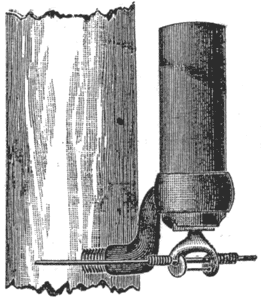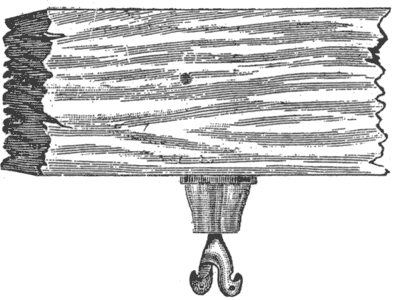[Trade Journal]
Publication: Electrical World
New York, NY, United States
vol. 6, no. 12, p. 123, col. 2
Paraffine Insulators.
Our illustrations show two forms of the Brooks paraffine insulators. Fig. 1 being known as the "screw shank." They are largely used in Central and South America, and in East India, Australia and Africa, in connection with iron poles.
 |
| Fig. 1/Pole Insulator. |
 |
| Fig. 2/Cross-Arm Insulator. |
The cross-arm insulator shown in Fig. 2 is that used by the Pennsylvania Railroad and its leased lines, on which it is found to give excellent results. On this road there are as many as 40 relays in a circuit of 135 miles between Altoona and Harrisburg. Each of their three divisions being over 100 miles in length, with so many relays averaging 200 ohms each, in circuit, it is impossible to work the lines in foggy or wet weather with the ordinary glass insulators. Hence these paraffine insulators have been employed. Their use also permits of a smaller wire being employed, as the insulation is very high.
As shown in the engraving, the bottle of clear glass is left bare where no strength is required. Besides its use on telegraph lines, the insulator is eminently adapted to electric light work, its excellent qualities in wet weather making it most valuable for that purpose.
